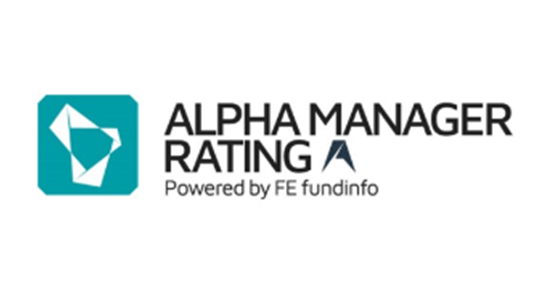In recent years, ESG Ratings have found their way into the mainstream conversation. With this increasing popularity, the criticisms directed at ESG rating agencies emerged.
Various concerns with many stakeholders have identified actionable points for improvement like methodology transparency or conflict of interest management.
In 2021, the International Organisation of Securities Commissions (IOSCO) published recommendations for improved transparency on ESG Ratings, prompting an increasing number of regulators to embrace and implement these guidelines.
Notably, there is a visible trend toward enhanced transparency among ESG rating agencies, accompanied by regulatory responses over the last months.
Regulatory ambition overview on ESG Rating agencies
Japan and the UK have been at the forefront of implementing initial codes of conduct, closely aligning with the IOSCO guidelines. In the case of the UK, this is being regarded as an interim stage while Japan took the lead by becoming the first country to adopt these guidelines.
However, the UK – and countries within the EU – are forging ahead with discussions about introducing a regulatory framework. Clear convergence toward this framework has yet to materialise, with a few notable differences persisting.
One fundamental variance lies in the underlying paradigm: the UK follows the single materiality approach, while the EU adopts a double materiality approach. This disparity may pose challenges to achieving convergence.
Solving the problem by supervising ESG Rating agencies
When discussing the regulation of ESG ratings, it's vital to encompass all publicly accessible and consumer-facing ratings.
If ESG ratings are publicly available, they should inherently possess credibility and robustness. This necessitates transparency not only in the methodology of the rating agency but also in the underlying information used for their creation.
It's important to note that merely subjecting ESG rating agencies to supervision might not singularly solve this issue. Ensuring transparency is complex and demands a comprehensive approach across the diverse entities contributing to ESG ratings.
The raw data forms the foundation for the quality and transparency of the final ESG rating. Key inquiries into data collection methods, reliance on empirical versus estimated data, potential alterations during processing are pivotal in determining the final rating.
Improvement across suggested regulations possible
In general, the measures suggested by the EU and the UK regulation exhibit sound and practical considerations. However, that’s not to say they cannot be improved.
EU policymakers chose to exclude ESG data products, except for ESG Ratings. They likely did this because turning data into ratings involves interpretation and subjective methods that aren't transparent. Yet, our experience shows that the data itself can change. We think if ESG data can be altered, it should be transparent.
It is important to advocate for a comprehensive proposal that not only addresses ESG ratings but also ensures transparency in the methodologies employed by ESG data providers across their spectrum of services.
Our recommendation extends beyond the confines of ESG ratings and emphasises the need for a regulatory framework that mandates transparency for all methodologies employed by ESG data providers to improve trust from the other stakeholders.
Secondly, while recognising the potential issues surrounding the proposed measures to mitigate conflicts of interest (with the EU aiming for a ban and the UK suggesting management), particularly the prohibition on ESG rating providers from also offering credit ratings or related consultancy services, we find room for clarification.
The evolving landscape of ESG considerations in credit ratings introduces ambiguity in how providers can effectively implement such a ban in practice.
FE fundinfo and ESG Ratings
Regulators frequently provide guidance to build trust and bolster market credibility, presenting a crucial opportunity to enhance trust in ESG ratings universally – a vital step for the burgeoning industry to fortify its standing and address public critique through increased professionalism and transparency across the sector.
FE fundinfo is committed to ESG and staying neutral by working with various data providers. We help clients create reports, following both regulatory and non-regulatory formats, using digital and traditional methods. Acting as unbiased intermediaries, we collaborate with ESG Rating Agencies and data providers, bridging the gap between stakeholders affected by new regulations.
Holding a database encompassing 120,000 share classes of EET (European ESG Template by Findatex) data, we proudly maintain Europe's foremost repository for SFDR-related information, playing a pivotal role in industry-wide dissemination.
FE fundinfo’s role involves collaborating with stakeholders, specifically asset managers and distributors, consolidating information to meet industry standards. We do not operate as an ESG ratings provider, nor do we directly utilise ratings data – except when assisting our mutual clients in engaging with rating providers.
Our advocacy regarding potential regulation revolves around clarity across multiple areas:
- Data transparency: Providing full disclosure on data origin and manipulation.
- Methodology transparency: Offering a clear overview of underlying models.
- Conflict of interest transparency: Reducing and disclosing potential conflicts.
- Change transparency: Proposing the inclusion of a change log for methodology modifications.
Furthermore, we advocate for a convergence in expected regulations, aiming for similarity while acknowledging the value in diversity. A robust alignment with global standards, such as IOSCO, remains integral to FE fundinfo’s suggestion for a regulator’s approach.
---
Dr. Matthias Breier, Head of ESG Product, FE fundinfo
This article first appeared in IFA Magazine on 15 December 2023


